► The Vauxhall Frontera, but not as you know it
► Priced from just £23,495
► First EV to be priced the same as ICE models
Another day, another compact electric SUV. But this time, this one is more important than what originally meets the eye. That’s because the new Vauxhall Frontera EV is the first car to cost the same across petrol and electric variants.
That’s quite an important moment in the history of electric cars, not least when you consider just a few years a at Vauxhall the EV could quite easily cost £10,000 more than its ICE counterpart.
Priced from £23,495, regardless of whether you choose a Frontera as a mild-hybrid petrol or the EV we’re focusing on here, Vauxhall’s cheapest new SUV represents staggering value, not least when you consider an MG ZS EV and Vauxhall Mokka Electric both start from north of £30,000.
So how is it so cheap, and surely there must be corners cut in the process? Let’s find out.
At a glance
Pros: Cracking value for money, spacious interior, comfortable ride
Cons: Electric range lags behind rivals, interior feels cheap, noisy
What’s new?
The Frontera replaces the quite rubbish Vauxhall Crossland, and slots between the Mokka and Grandland in the firm’s refreshed SUV line-up, despite costing the least of the lot. That’s enabled by it being based on Stellantis’ ’Smart Car’ platform, essentially cheaper, budget underpinnings that use a smaller battery and less powerful motor than what’s now typically commonplace in cars of this type. It’s the same platform as the new Citroen C3 and forthcoming Citroen C3 Aircross.
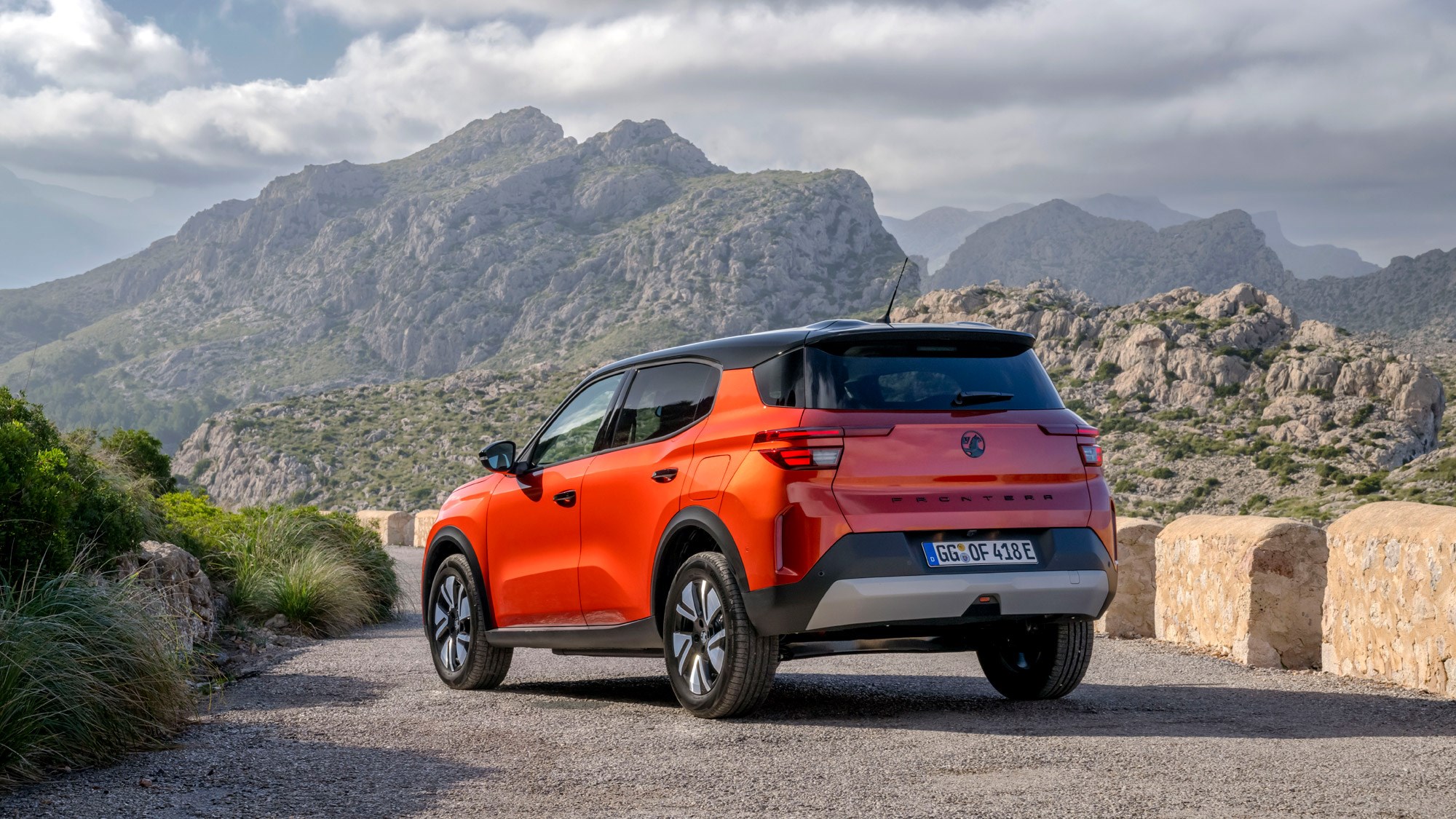
You can’t ignore the Frontera nameplate, either. Yes, the name of the flawed ‘90s Vauxhall 4×4 is a weird choice to bring back for a new budget crossover, but few buyers will likely care (or even know) about the original Vauxhall Frontera. And all the better for it.
It’s designed to be cheap and cheerful, with a practical layout and no-frills cabin. The Frontera is also the final piece of Vauxhall’s electric car jigsaw, as its arrival means that every car it now sells can be has as an EV, alongside combustion models. Fair play to the firm for sticking to its promise at a time when so many have delayed their EV rollout.
What are the specs?
That cheap price has to come from somewhere and ultimately it’s the powertrain that enables it. A 44kWh battery isn’t a lot for a car of this size, and is a bit backward – the MG ZS EV’s battery was the same size when it debuted in 2019 – and the result isn’t a great deal of range. Vauxhall claims 186 miles, but 150 miles is more likely in real-world conditions. For comparison, a new ZS EV with a 51kWh battery can manage 198 miles, while a Hyundai Kona Electric with a 48kWh battery can manage a claimed 234 miles. But, again, both are considerably more expensive.
More positively, the Frontera can charge at 100kW – considerably faster than the much pricier Honda e:NY1, not that this is a benchmark by any means, meaning a 20 to 80 per cent charge can be completed in 28 minutes.
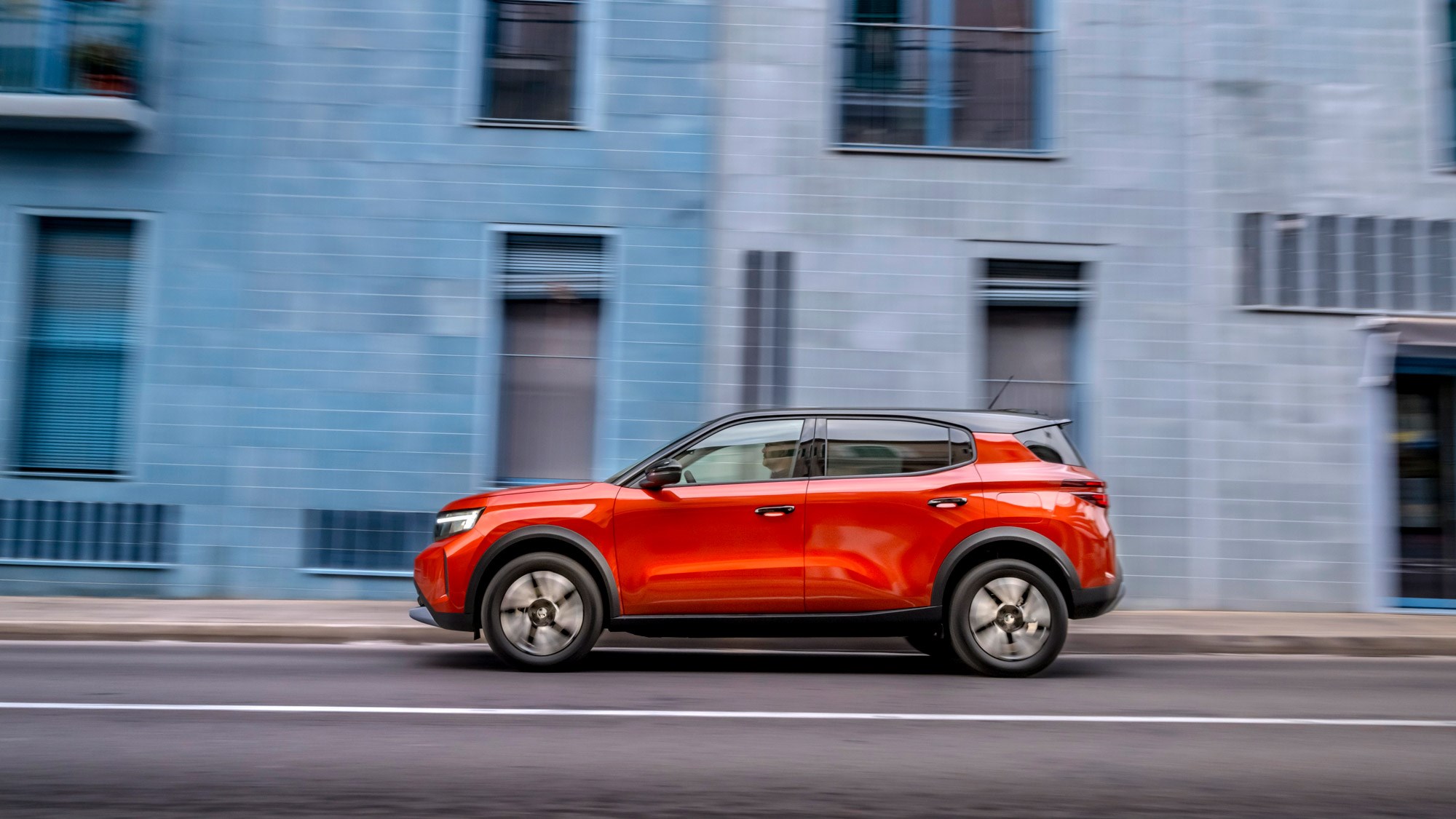
Vauxhall promises that a Long Range model will follow in 2025 with a 248-mile range, though the specs and pricing haven’t been finalised. But the advantage of the current smaller battery is also weight, as tipping the scales at a little over 1.5 tonnes, the Frontera is impressively light for an electric SUV.
The motor itself is perhaps a bit too lacking, as putting 111bhp and just 92lb ft of torque to the front wheels means 0-62mph is dispatched in a leisurely 12.1 seconds and it will max out at 87mph.
How does it drive?
The greatest compliment you can pay to the Vauxhall Frontera is it drives better than you’d expect an electric SUV of this price to. There’s no penalty for choosing the ‘cheap’ option like on some other EV options (*coughs* Dacia Spring). You can tell much of its underpinnings started out as a Citroen, especially when it comes to comfort. The Frontera has the same slightly floaty ride as a C3, and you can bounce it over speed bumps as if the chassis hasn’t even noticed, and even on a rougher stretch of tarmac, imperfections are hardly felt. At speed you occasionally get a level of joltiness to it, but generally it rides very well.
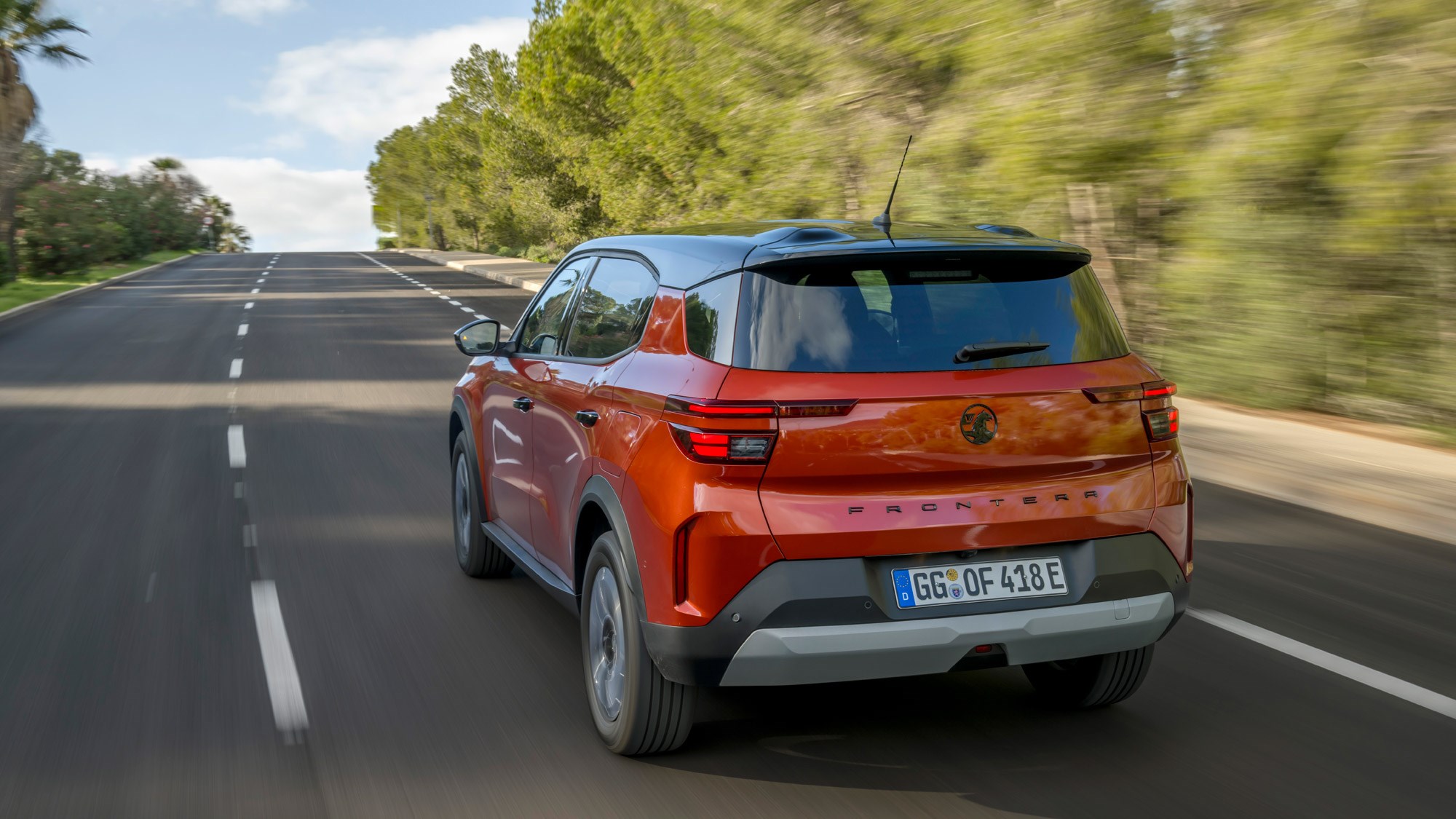
I went into the first corner in the Frontera expecting it to roll off the side of a Mallorca cliff face, but body roll is kept surprisingly well in check, which you can thank the low-positioned battery for. For such a top-heavy car, it’s a commendable effort. But ultimately the Frontera is not a car you’ll want to push. Front-end grip lasts to a point until you get understeer and the slow steering means lots of lock is needed on a tighter bend. It’s great around town but doesn’t inspire the most confidence on the twisty stuff, but again doesn’t feel too much worse than more expensive rivals.
It’s generally better to drive than the mild-hybrid model, which suffers from a rowdy engine, slow gearbox and more body roll, though performance is not a strong point of the Frontera. I’m not sure I’ve ever driven an EV so slow, with initial acceleration off the line quite limited, though upwards of 30mph, it can easily keep up with other traffic.
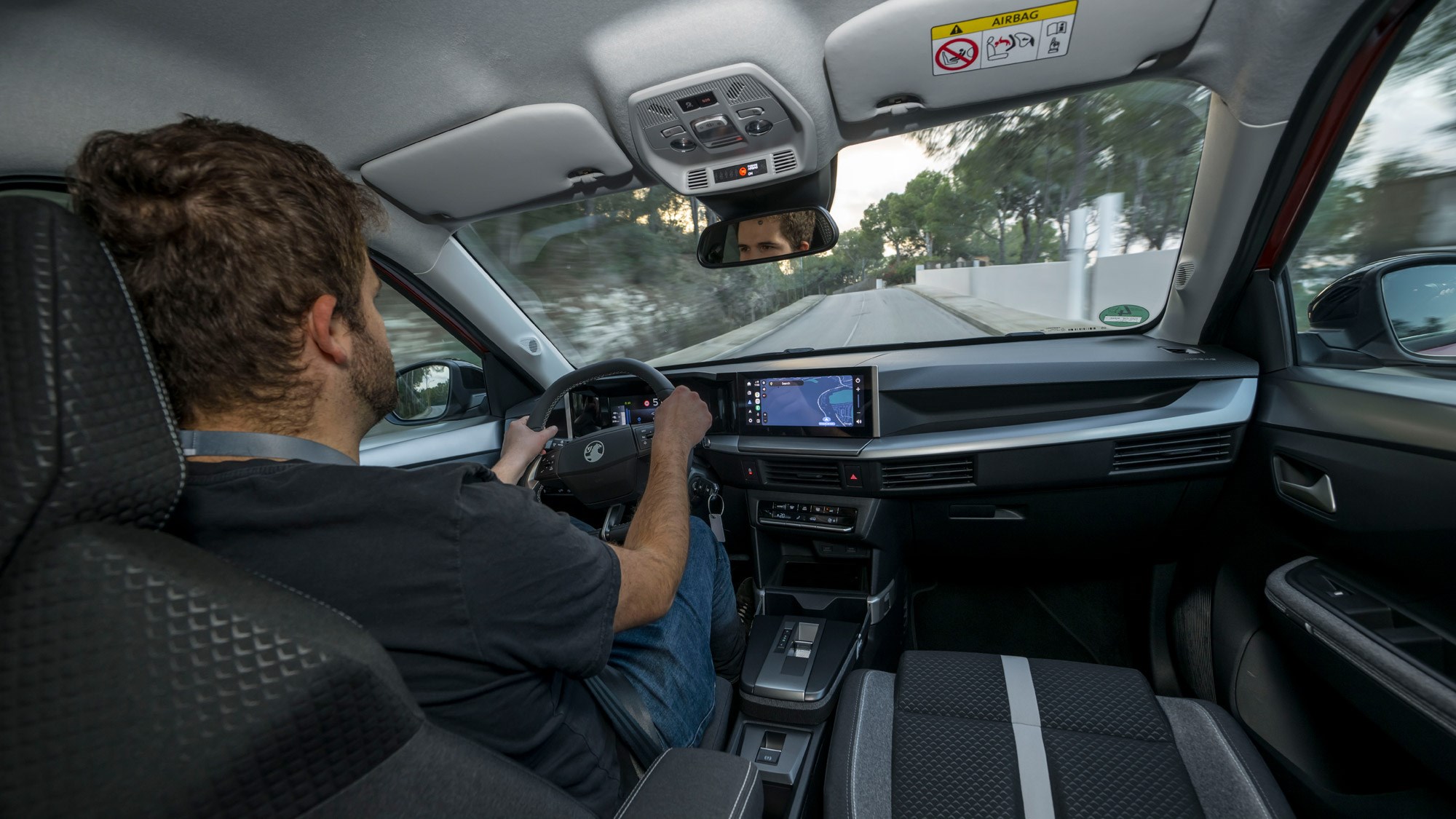
The one main gripe is that the Frontera is a loud car to be in. The whine from the electric motor is pronounced, and wind and road noise is very obvious, regardless of speed. The first time on the motorway I checked several times a window was slightly down as it was so pronounced. Sound deadening was clearly an easy cost saving to make by the Vauxhall accountants.
What’s it like inside?
The Frontera’s interior certainly feels built to a price, and a cheap one at that. Hard plastics by far outnumber softer-touch materials though the actual touch points are fairly pleasant, at least on top-spec GS models, which get smart grey seats and fabric on the door cards. It’s one of those cars that looks good at a glance but feels much cheaper on closer inspection. The dashboard has a real flimsiness to it and base-spec Design models do away with most soft-touch aspects. But within it are cool elements, such as the ‘Flex Strap’ around the centre console that doubles up as a cupholder and the sheer level of recyclable content. Vauxhall says 85 per cent of a Frontera can be reused.
The level of space in the Frontera is seriously impressive. Vauxhall calls it a C-Segment car, putting it in the same ballpark as an Astra and its new Grandland, and it delivers with a level of spaciousness you’ll not find an EV anywhere close to this price.

There’s plenty of rear-seat space for adults, albeit the floor of an electric Frontera is quite high, so some may find their legs positioned uncomfortably high. The 460-litre boot is split with a height-adjustable floor and with the seats folded it increases to 1,600 litres – considerably more than just about any other electric crossover. The mild-hybrid Frontera can be had with seven seats as an option, but the higher floor of the EV doesn’t allow for it.
Before you buy (trims and rivals)
The £23,495 starting price of the Frontera really is outstanding, and there’s nothing like it currently for the price in the EV world– until the mechanically-similar Citroen e-C3 Aircross arrives at least. But consider a Vauxhall Corsa Electric starts at almost £27,000, even with recent price adjustments, and you can’t help but feel the Frontera’s staggering value has almost shot Vauxhall’s other electric products in the foot.
Standard spec is reasonable, too, with features including LED headlights, a reversing camera, cruise control, wireless phone charging and Vauxhall’s Pure Panel interior, which merges together a 10-inch touchscreen and digital instrument cluster of the same size. Step up to the GS for £25,895 and you’ll get blind spot monitoring, electric folding mirrors, a black roof and 17-inch alloys you included.
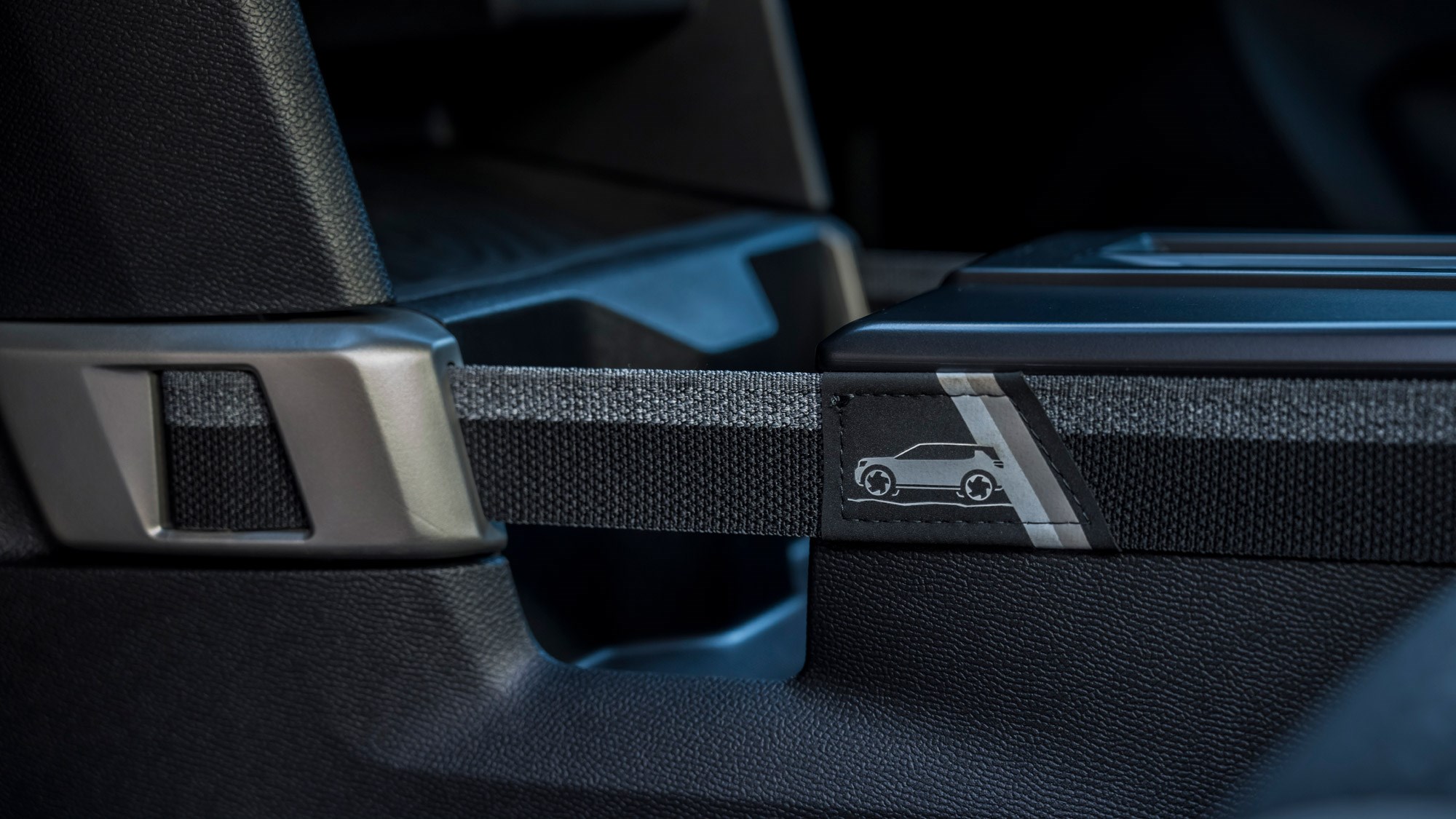
There’s no Ultimate trim available here, but you can spec an ‘Ultimate Pack’ on the GS model, bringing heated seats, a heated steering wheel and roof rails for £800. Consider that even with this added, and metallic paint, that it comes in at less than £27,000 and this really is a steal of a car.
The only other thing of interest is that on base models that do without alloys you can have white steelies and a white roof for a £400 option. If you want your Frontera to have the ‘UN support car’ look about it.
Verdict
Game-changer is an overused phrase in the car journalist handbook but one that very much applies to the electric Vauxhall Frontera. This is perhaps the first genuinely practical EV that will work as a family car that is available for a sensible price. Costing less than many of its ICE competitors, and significantly undercutting any other electric SUV competition, it’s a formidable option and deserves to do well. That price parity is a staggering factor considering just how expensive an EV was next to a petrol just a few years ago – and even remains from some manufacturers.
Yes, the range will rule it out as a family car to some and the interior does feel cheap if you’re used to all the bells and whistles, but these are small compromises to make if you can make it work for you. The Vauxhall Frontera is a much better ‘value car’ than the Dacia Spring by feeling cheap without having to make any major compromises. More of this, please.